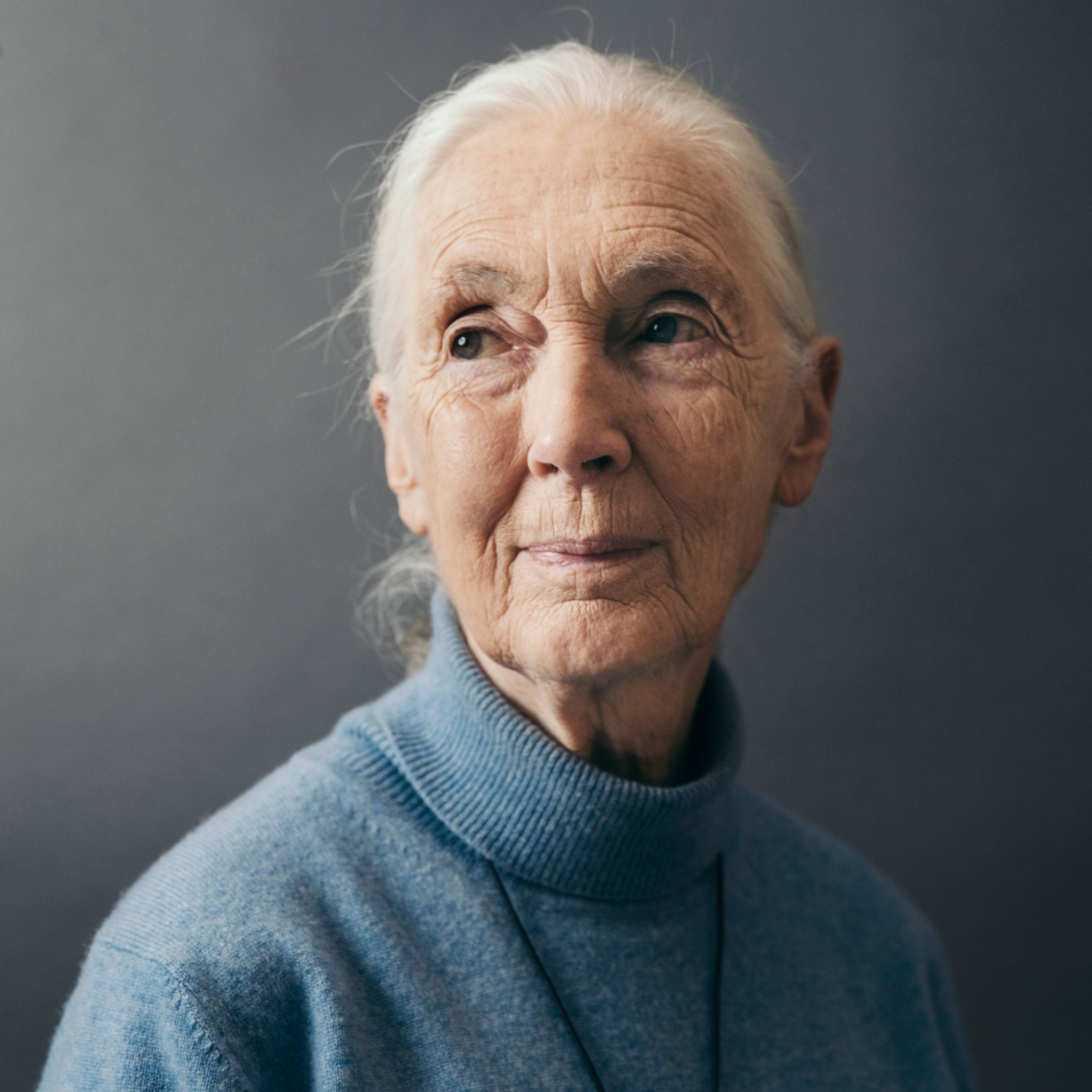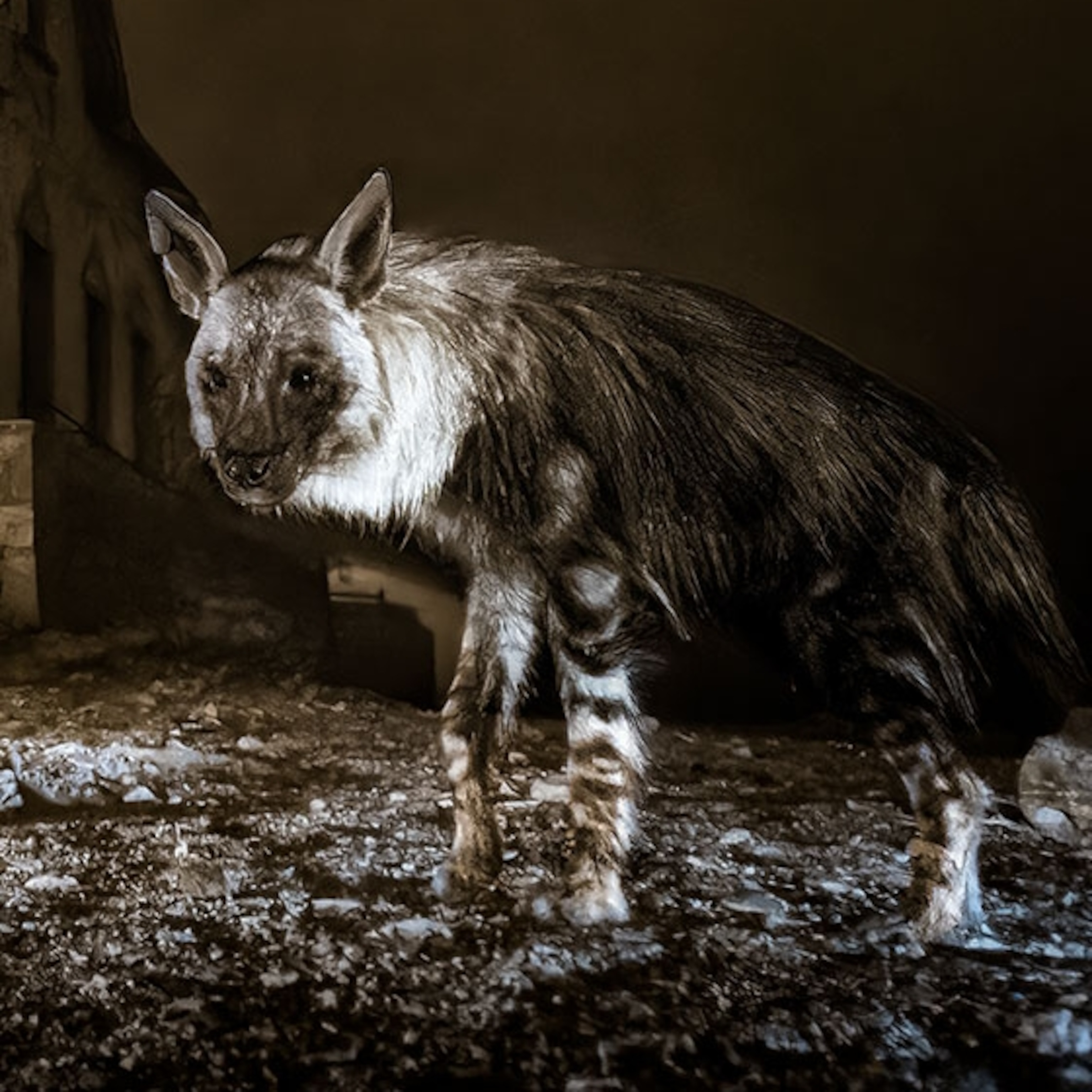Behind the Scenes of a Groundbreaking Wildlife Series
Nat Geo Wild’s Untamed with Filipe DeAndrade takes viewers on an epic journey across the U.S., in search of everything from mountain lions to sea turtles.
San Antonio, New Mexico — “Here they come,” someone whispered.
We were standing ankle-deep in frigid water on the edge of a marsh, cameras and binoculars at attention.
Suddenly, a deafening chorus of guttural honking and wings flapping filled the sky, as tens of thousands of snow geese flew in over the surrounding hills. In big, chaotic spirals, the birds circled the lake a few times before they settled down onto the surface of the water.
“That’s amazing, right?” asked Filipe DeAndrade, who had been framing shots of the flock with a professional-grade, Red Raven video camera and a long-lens Canon.
DeAndrade stood at the edge of the marsh in shorts despite the near-freezing temperature. He had gotten soaked the day before setting out camera traps and had missed his chance at laundry. “My socks are like papier mache,” he joked.
Wildlife filmmaker DeAndrade, 30, and his Comfort Theory Films crew had already spent several days in central New Mexico at the Bosque del Apache National Wildlife Refuge, filming a new web series for National Geographic Wild: Untamed with Filipe DeAndrade. The refuge made a stunning backdrop to their efforts to record rarely captured behaviors, from swooping bald and golden eagles to the nightly hunts of mountain lions. Nestled in a valley between the Chupadera and San Pascual Mountains, the 57,331-acre refuge harbors a wild stretch of the Rio Grande River, which is fringed by a ribbon of cottonwood and willow trees.
Launching on Wild’s YouTube channel on March 14 and running through May 9 in 10 episodes, Untamed with Filipe DeAndrade emphasizes beautiful photography and a fresh look at accessible-yet-under-appreciated wildlife in the U.S. Each episode runs only a few minutes and is packed with action and humor. The series developers hope the show will appeal to a young, diverse audience.
“This isn’t an old-school wildlife documentary, with an old white guy in L.L. Bean,” says DeAndrade. “Those kinds of shows used to intimidate me, because I felt that I couldn’t do that,” he adds. “But now we’re having the time of our lives.”
Humble Roots (and a Manbulance)
Born in a favela in Rio de Janeiro, DeAndrade grew up largely in Cleveland after his family emigrated when he was five. After a few tumultuous years at home his parents divorced. DeAndrade says he learned tenacity from his single working mother, who started out on minimum wage but eventually bought her own business.
When he was young, DeAndrade fell in love with wildlife photography and filmmaking, in part as an outlet to challenges at home. “I discovered I love wildlife,” he says. “And I want to tell their stories.”
DeAndrade worked on his craft at the University of Florida, where he met McKenzie Barney and Brian Moghari. The friends eventually formed Comfort Theory with Barney as producer and Moghari as director and editor. For Untamed the team added additional shooter Mike Rollins.
“In film school we were the kids who smelled like cabbage, who spent all night in the editing suite, getting kicked out by teachers the next day,” says DeAndrade.
His career got a boost in 2015, when DeAndrade won National Geographic’s “Wild to Inspire” short film competition at the Sun Valley Film Festival. After that, Wild invited him to Africa to assist with some documentary projects.
“Filipe’s work is so genuine and compassionate,” says Geoff Daniels, the EVP and General Manager of Wild. “He has a way to move audiences and speak to kids and other communities.”
As a nod to his Cleveland roots, DeAndrade keeps a plush figure of LeBron James on the dashboard of his van, which he calls Florence the Manbulance, after his favorite band—Florence and the Machine. The decommissioned ambulance still has a working siren and intercom, which the Comfort Theory crew uses to rouse each other for early morning filming sessions. The vehicle’s body has over 300,000 miles on it.
“I paid $5,500 cash for it,” said DeAndrade. “It’s my first vehicle-slash-house purchase.”
The crew mounted solar panels on the van’s roof to power their gear in the field. For storage they take advantage of cubbies that used to hold medicine and bandages. While shooting Untamed in Florida, South Carolina, and Louisiana, the team camped out of the Manbulance. But in colder New Mexico they stayed in the bunk house operated by the nonprofit Friends of Bosque del Apache National Wildlife Refuge.
Discovering the Wildlife Next Door
On their Untamed journey, the team has filmed dolphins leaping out of the foaming sea, hummingbirds battling for resources in a bayou, and invasive monkeys swinging over a river.
All through their work, “we let the wild be wild,” says Barney. “We try not to interfere with nature.”
Getting good shots is therefore a patience game, she says. “When you allow things to happen you get unpredictable moments and much better stuff.”
For roughly 30 seconds of good footage of baby sea turtles hatching, the team pulled six back-to-back all-nighters on Florida’s St. Augustine Beach.
“That’s wildlife filmmaking,” says Barney. “The lows are low and the highs are high.”
The shooting schedule for Untamed was so tight that the team could only manage one two-day break, at Thanksgiving, between early September and February.
But the hard work has paid off, in the stunning footage gathered and in the stories about the wildlife that is nearer to many Americans than they realize. As a result of the project, “I’ve grown to appreciate our country more and what you can see here,” says Barney.
“To think that I went to school a few hours from where loggerhead sea turtles nest and where dolphins breach makes me wonder what else is out there,” says DeAndrade.
Land of the Craniacs
As we bounced along a dirt path through the Bosque del Apache National Wildlife Refuge, a roadrunner darted in front of the Manbulance.
“Look at that fog lifting off the water,” DeAndrade said with excitement, despite the pre-dawn hour. “That looks pretty sweet, right?”
A little while later, he pointed across an alfalfa field. “Another explosion!” he shouted. Crane feathers were strewn wildly about, indicating a fresh kill by an unseen predator.
“I’m kind of obsessed with sandhill cranes,” said DeAndrade. “I love watching them.”
By the looks of the “Craniacs” hats worn by some of the camera-toting guests to the refuge, he wasn’t the only one.
“This environment is so saturated with wildlife that anything can happen,” Barney added. Her favorite experience during filming was watching clever coyotes pick off snow geese around the edges of the flock as the birds rested in a field.
The filmmakers also got close-up GoPro and camera trap footage of a coyote ripping into the ribs of a fresh elk kill. “Coyotes and vultures are like the cleanup crew around here,” said DeAndrade.
Other notable footage from the refuge includes peregrine and endangered aplomado falcons dive bombing their prey, young Harris hawks learning to hunt in pairs, pintail ducks doing their “butt dance” by plunging their heads into the water to forage, and hooded mergansers paddling on a pond with a surface like glass.
At one point during the day, a refuge volunteer drove by. “There’s a javelina giving birth to the southeast,” she said, excited. “And don’t miss those two mulies [mule deer] across the road.”
Refuge biologist Megan E. Goyette said she hopes Untamed will help introduce more people to Bosque del Apache. “A lot of people don’t know about the work we do to keep this place up,” she said.
Those efforts include filling ponds from river water, removing invasive salt cedar that chokes the marshes, turning over soil periodically, and planting alfalfa as a forage crop for the wildlife. “Without us this would all be desert,” she said.
Before engineers straightened and channelized the river in the 1920s, and diverted much of its flow for agriculture, the Rio Grande used to meander through the valley, Goyette explained. Every winter it flooded its banks, creating wetlands that served as invaluable habitat for wildlife. But after that natural cycle was disrupted, the wildlife disappeared.
In 1939, President Franklin D. Roosevelt signed an order that created the refuge. Since then, it’s been a rare section of the Rio Grande “that performs like it did historically,” says Deb Caldwell, the executive director of the Friends of the Bosque del Apache.
For decades the refuge has served as an important wintering place for hundreds of thousands of birds, deer and elk, and the predators that feast on them. In the summer, the ponds are allowed to dry out and most of the animals migrate elsewhere. The region was named Bosque del Apache (Spanish for “woods of the Apache”) by early visitors who were surprised by native warriors hiding out in the cottonwoods by the river.
Today the refuge is a popular draw for tourists, especially birders, and contributes around $13.5 million a year to the local economy—a boon to a poor, rural county of 17,000 people.
“We live in a fragile environment and we have an oasis here in the desert that is worth protecting,” said Caldwell. “It’s great to have young blood out here,” Caldwell added, referring to the energetic Comfort Theory crew. “Hopefully young people will watch the films and then come out here to visit.”
Tracking the Cat
In the final hours of my visit in the field, DeAndrade and team scoured the area for a good place to set out motion-activated camera traps, in hopes of documenting some predators in action.
“At first I wasn’t sure I wanted to use camera traps but I’ve come to really appreciate them,” DeAndrade said. “They are great for getting organic social behavior since you don’t have to be there, so you aren’t there to distract the animals.”
Pointing to mountain lion tracks in the dirt, he said, “This is cat territory.” He dropped to all fours to show how the stealthy hunter had recently padded along a path through the thick salt cedar, likely leading her cubs to a fresh elk kill. He set out two camera traps, facing different directions down the path.
“I’ve seen more wildlife in the past six months than I’ve seen my whole life,” said DeAndrade. “That’s great, because our whole concept for the show is to get people to fall in love with their own backyard.”
A few weeks later, DeAndrade confirmed that his team’s patience paid off. On their penultimate day at the refuge they captured stunning footage of the mother cougar and her two cubs on a fresh kill. Not only that, but their camera traps revealed another adult female that refuge scientists hadn’t even known about.
“How cool is that?” asked DeAndrade.








